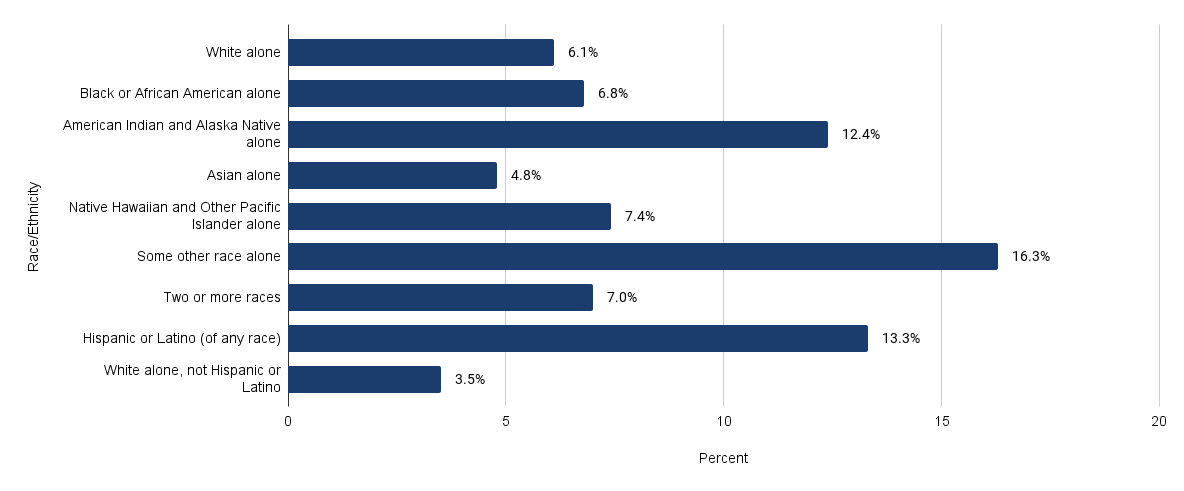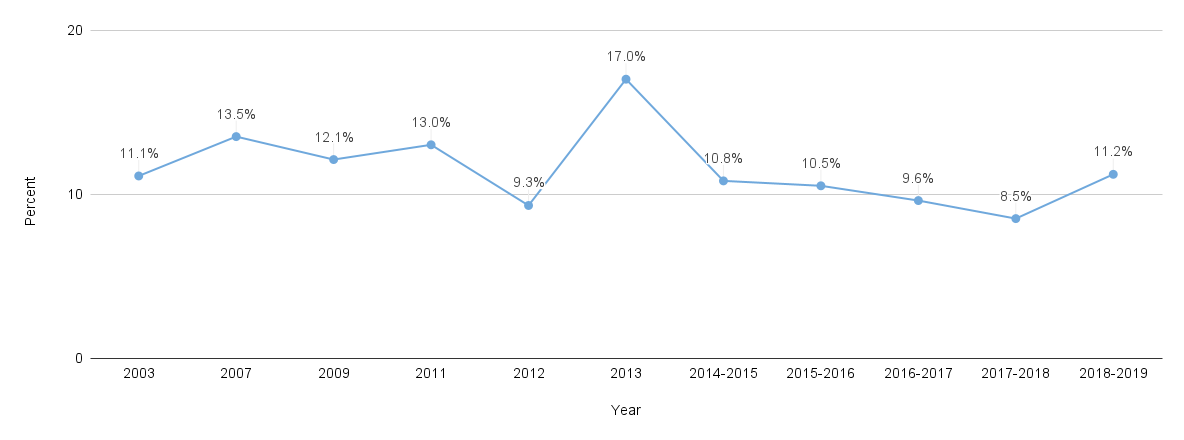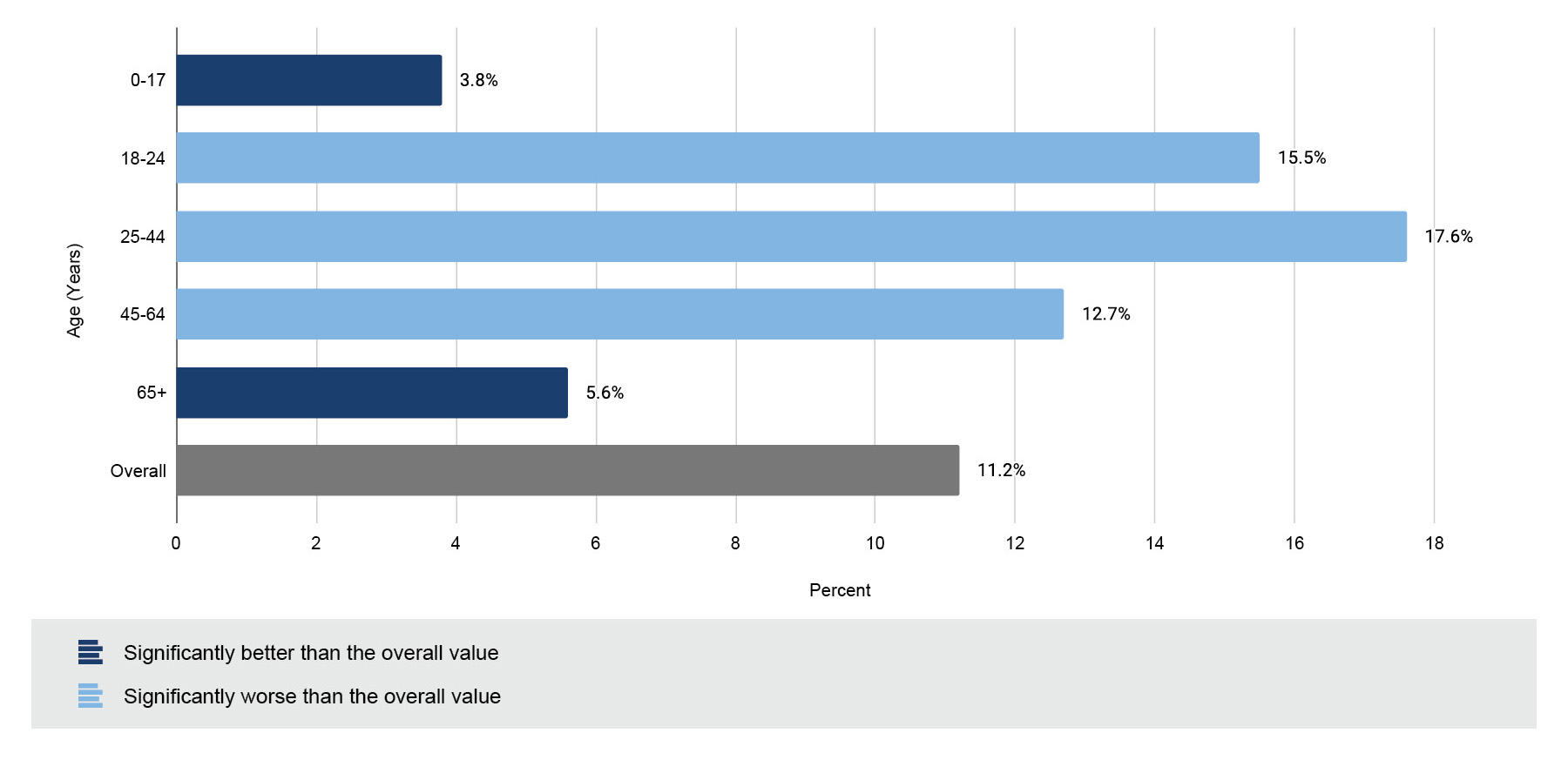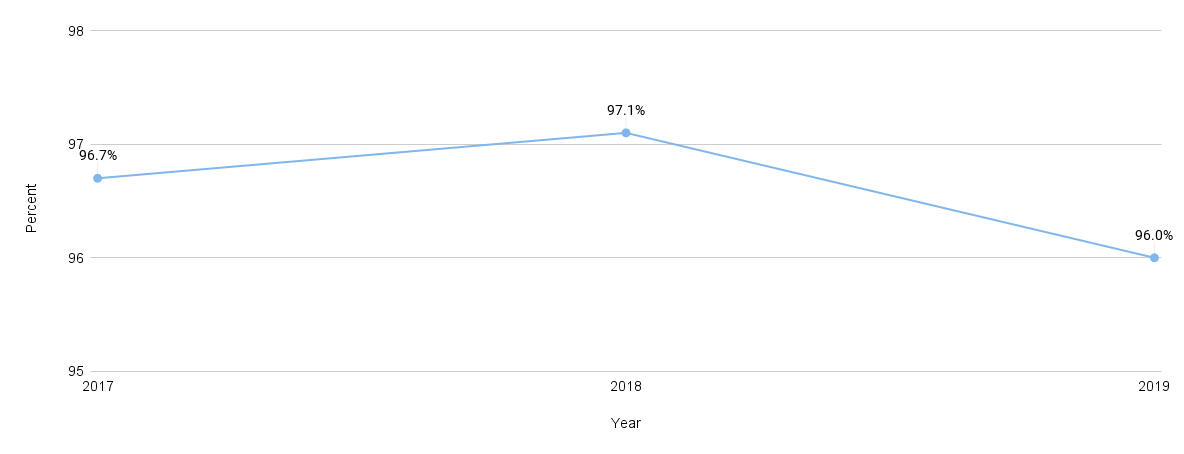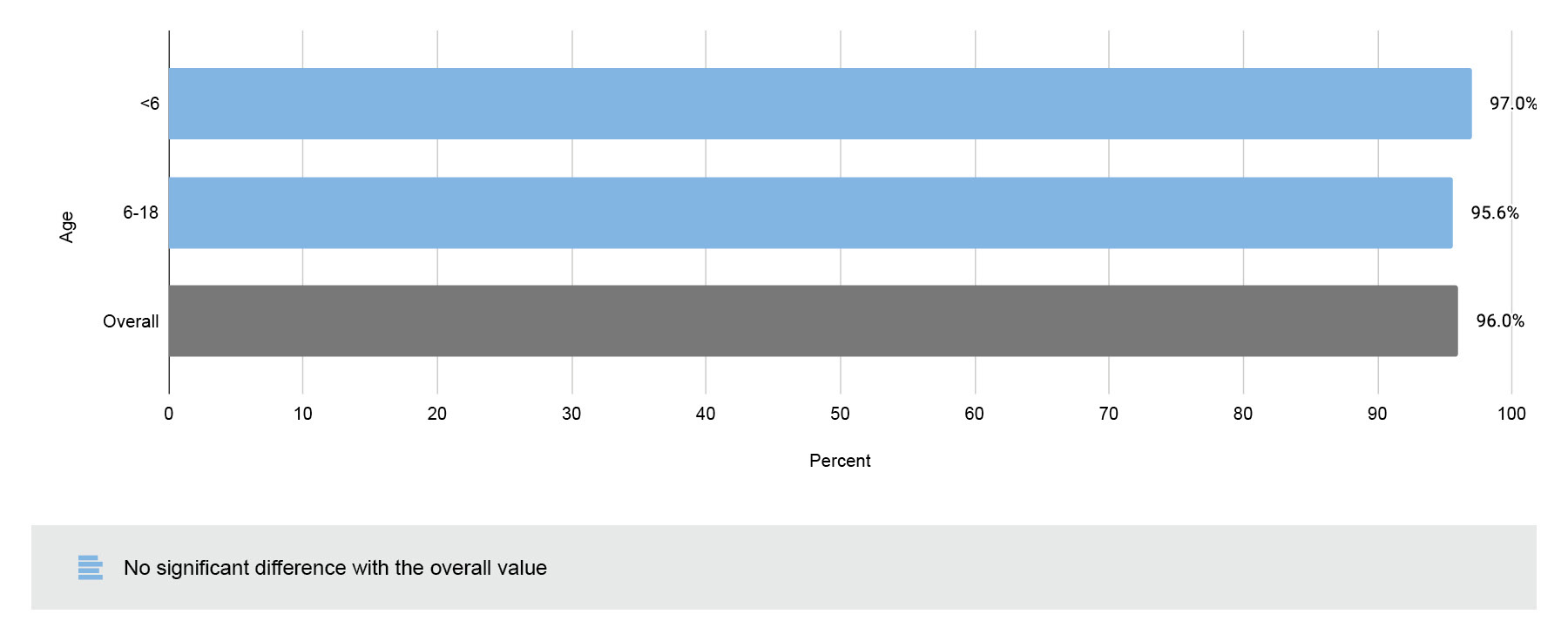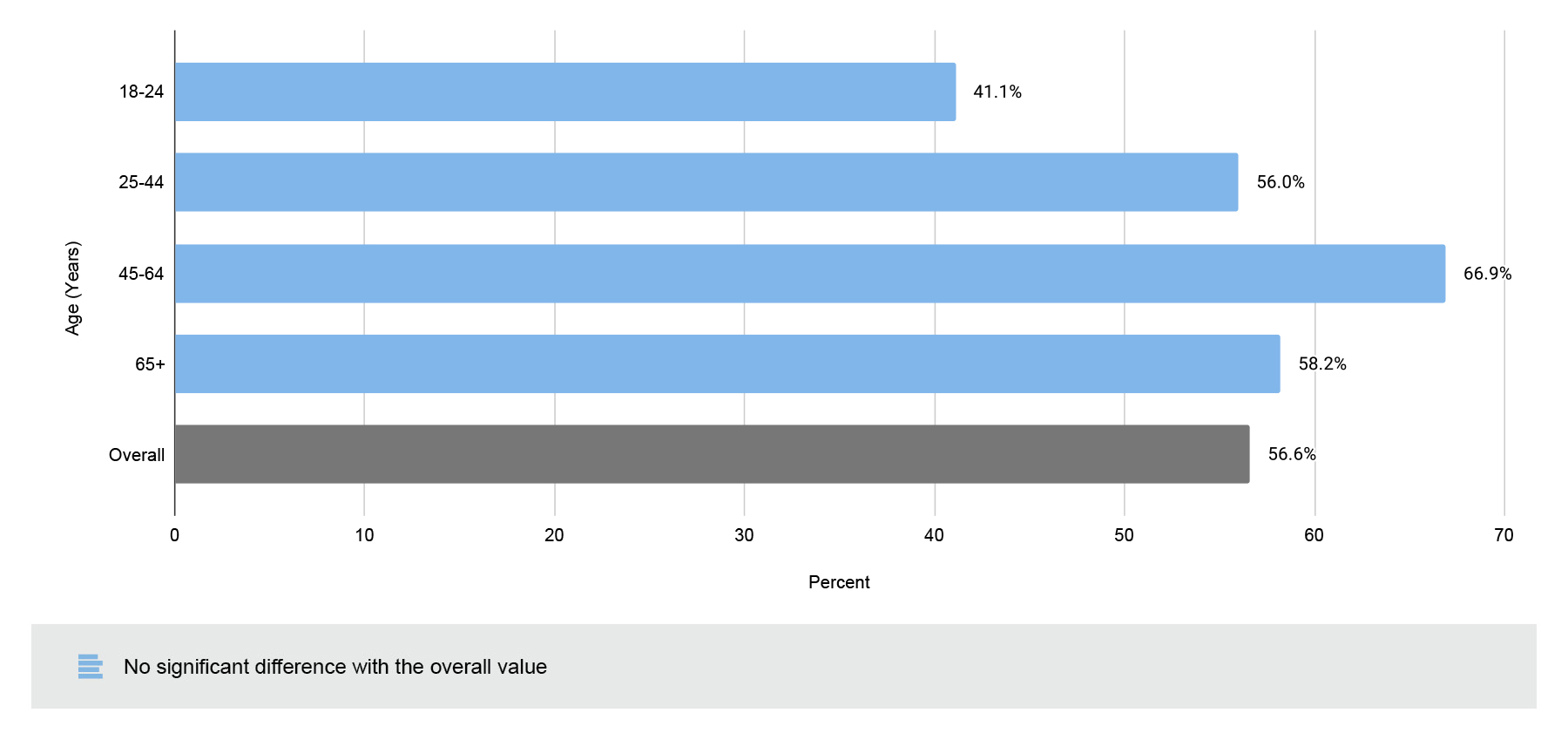Why is this important?
Medical costs in the United States are extremely high, so people without health insurance may not be able to afford medical treatment or prescription drugs. They are also less likely to have routine checkups and screenings, resulting in more complex and costly treatments as they delay seeking medical help.
Almost 90% of Orange County residents have health insurance, a rate consistent with the State but higher than the country.
-
Percentage of Adults (Ages 19-64) With Health Insurance
89.3%Orange County, CA
-
89.3%
California
-
87.6%
The United States of America
In Orange County, residents with low socioeconomic status (SES) are more likely than higher SES groups to have access-related issues, such as no health insurance, an inability to afford medications, inadequate transportation to medical appointments, and a lack of recent health screenings. According to the 2020 American Community Survey, people identifying as Hispanic/Latino, American Indian/Alaska Native, and people of other races alone had the largest uninsured population (see graph below).
Uninsured Population by Race/Ethnicity in Orange County
Source: American Community Survey, 2016-2020.

